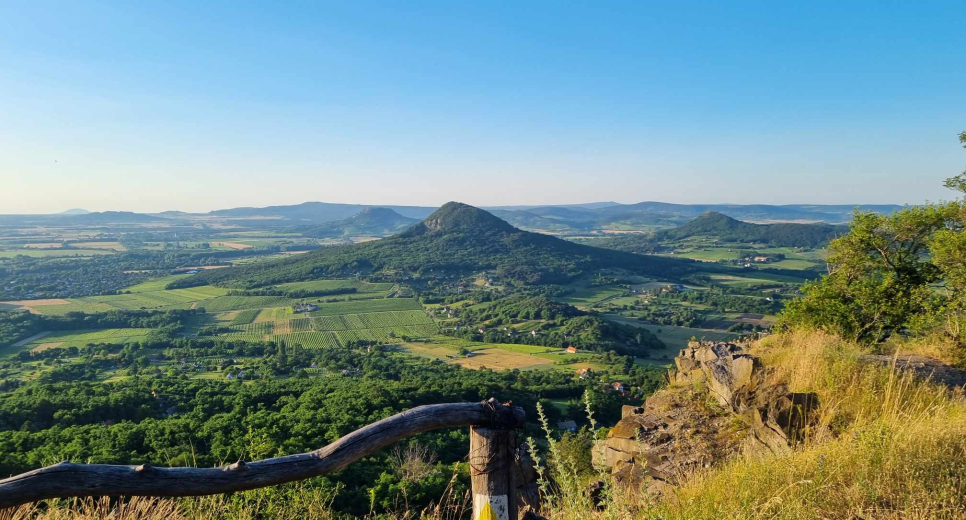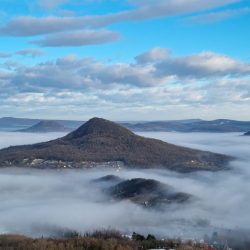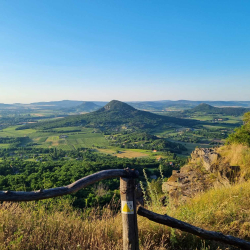
8261 Badacsonytomaj-Badacsony, Park u. 20. •
+36 87 531 013 •
badacsonytomaj@tourinform.hu
Gulács

The Gulács is a strange volcanic formation, which has been discovered by few in the area and is a fantastic hiking destination. The formation of the mountain is different from that of the volcanic Badacsony, but Gulács has also experienced a number of volcanic events. Its peculiarity is that it has a different shape from every point of the compass. Because of its shape, it is often called the Hungarian Fuji, the name first given to the mountain by the local writer Dezső Keresztury, who considered Nemesgulács his real home throughout his life.
Many protected plants and animals can be seen on the hike up on the mountain. On the side of the mountain, you will see landscape scars caused by mining, but around its outskirts you will see vineyards. From the summit, you can even see the snowy summit of Schneeberg in Austria in good visibility conditions. Today's highest points were originally the lowest point of the volcano. The fact that we can see them is due to 3.5 million years of destruction by external forces. Its rock is of good quality, which is why it was mined until the 1960s. One and a half million tonnes of rock, specifically basanite, have been extracted over time. The fill of the horn can be clearly seen, the columns are not straight in the crater tilted towards the current summit. The vineyards on the side of the mountain are an important jewel in the crown of the Badacsony wine region.


